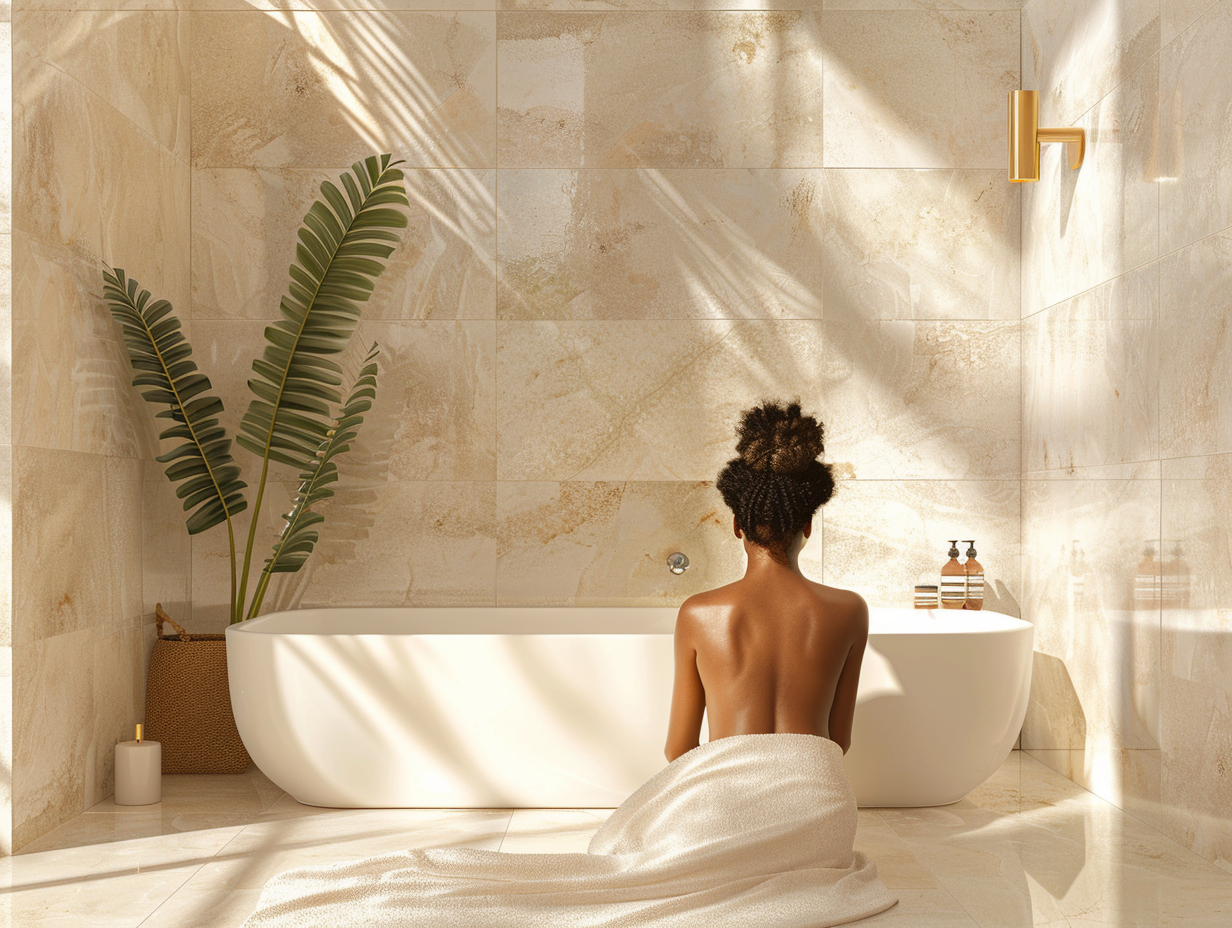The bathroom serves as both the starting and ending point of most people’s days, making it a crucial yet often overlooked wellness space. Simple, intentional adjustments to this environment can substantially impact overall health and daily mindset without requiring extensive renovations.
Your bathroom is more than just a place to get clean—it’s where your day begins and ends. With a few key adjustments, you can turn this essential space into a sanctuary that supports your wellness goals without sacrificing style or function.
Shower modifications for mental clarity
The daily shower represents more than basic hygiene—it offers a mental reset opportunity. Making targeted improvements to this experience can enhance both physical and psychological benefits.
Filtered systems: Installing a filtered showerhead reduces exposure to chlorine and other potentially irritating chemicals. This protects skin and hair while providing cleaner water contact.
Specialized water delivery: Rainfall showerheads distribute water more evenly, creating a gentler sensation that helps release muscle tension. Handheld options offer targeted pressure for relieving specific areas of tightness.
These adjustments transform routine cleaning into a therapeutic experience that bookends the day with sensory comfort and mental clarity.
Strategic lighting for circadian alignment
Bathroom lighting significantly affects mood and energy levels. Harsh fluorescent lighting can trigger stress responses, while properly designed lighting supports natural body rhythms.
- Replace cold fluorescents with warm LED options that more closely mimic natural light
- Install dimmable fixtures to control brightness levels throughout the day
- Position lighting to maximize rather than replace available natural sunlight
- Consider color temperature—warmer for evenings, cooler for mornings
Proper lighting affects your circadian rhythm, which influences everything from sleep quality to hormone regulation.
Organization for mental clarity
Clutter creates visual noise that can elevate stress levels, particularly during rushed morning routines. Streamlining the bathroom environment promotes calm and efficiency.
Storage solutions: Clear containers, drawer dividers and wall-mounted options keep necessities accessible without creating visual chaos.
Product evaluation: Regularly assess which products genuinely contribute to wellness routines and remove those that don’t serve a purpose.
Natural elements: Incorporating small plants like snake plants or aloe vera adds air-purifying benefits while connecting the space to nature.
The resulting organization extends beyond aesthetics—it creates mental space for focusing on self-care rather than navigating disarray.
Mindfulness integration
Bathrooms offer unexpected opportunities for incorporating mindfulness practices into daily life. Small adjustments can transform routine moments into mindful pauses.
Creating a designated corner with a small stool or cushion provides a physical anchor for brief meditation sessions. Pairing this space with simple aromatherapy—like eucalyptus or lavender essential oils in a diffuser—enhances the sensory experience.
These environmental cues help trigger the parasympathetic nervous system, promoting relaxation even during brief bathroom visits.
Hydration strategy
Placing a designated water vessel in the bathroom serves as a visual reminder to hydrate at the beginning and end of each day. This simple approach supports:
- Morning rehydration after overnight water loss
- Consistent water intake throughout daily routines
- Better skin hydration when paired with skincare regimens
- Digestive function and natural detoxification processes
The convenience factor makes this one of the highest-impact, lowest-effort wellness adjustments.
Movement-friendly design
Traditional bathroom layouts focus solely on hygiene functions, but minor spatial adjustments can incorporate movement opportunities:
Multi-purpose fixtures: Sturdy towel bars positioned at hip height can double as balance supports for simple stretches.
Floor space optimization: Clearing even a small area allows for basic mobility exercises or balance practices during otherwise stationary activities like teeth brushing.
These design considerations support maintaining flexibility and circulation, particularly beneficial for those with sedentary occupations.
Temperature therapy integration
The bathroom naturally accommodates temperature-based therapeutic techniques. Having designated items for these practices increases their accessibility:
- Soft washcloths for cold compresses to reduce morning facial puffiness
- Warm, moist towels for relaxing neck and shoulder muscles
- Face basins for contrast therapy (alternating warm and cool water immersion)
These simple tools allow for incorporating circulation-stimulating practices without additional time commitments.
Air quality improvements
Bathroom environments typically struggle with humidity and ventilation challenges. Addressing these factors significantly impacts respiratory health:
Mechanical solutions: Upgraded ventilation fans with humidity sensors automatically maintain optimal moisture levels.
Natural approaches: Moisture-loving plants like Boston ferns naturally regulate humidity while filtering air pollutants.
Poor indoor air quality can significantly impact respiratory health and skin, making these adjustments particularly valuable for overall wellness.
Final thoughts
Transforming the bathroom into a wellness space doesn’t require extensive renovation or expense. Beginning with a single modification—improved lighting, better organization or hydration reminders—creates momentum for building a comprehensive wellness environment.
The cumulative effect of these small changes extends beyond the bathroom itself, potentially influencing everything from sleep quality to stress management. By viewing this essential space through a wellness lens, daily routines evolve into intentional practices that support both physical health and mental balance.












